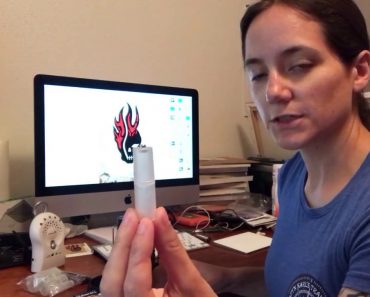Survival, as we discuss it in the prepping and survival community, is a complex task, using many skills that the average person today couldn’t perform if their life depended on it. How many times have you seen a non-prepper try to start a fire, all to no avail? I had a neighbor once, who went through an entire container of charcoal lighter fluid and couldn’t understand why the fire wouldn’t stay lit. He literally had no idea that the flames were supposed to die down, leaving the coals glowing cherry red.
I’ve seen much scarier things in regards to drinking water; where people thought that as long as the water was clear, it was safe to drink. That’s what I learned in Cub Scouts, several decades ago. I sure hope they’ve changed their training since then. It might have been one thing for Napoleon to think that, back in the early 1800s; but back then, they had no idea of microbiology.
As we all know, the life we live today is far removed from the basic necessities of survival. That’s why it’s not only important that we learn survival skills, but practice them to the point where they become second nature. When the time comes that we need to use those skills, we won’t have time to look up how to do it and there probably won’t be internet access, to look them up with.
But just how do we fit practice into our busy lives? Between work, running our kids to their activities and all the other responsibilities of life, it seems like trying to fit survival training into the schedule is a nice wish… but that’s about as far as it gets for many of us.
Trust me, I understand the challenge; I face it too. That’s why I have to make a point of fitting survival training into my own schedule. The more I do, the more I find it easier to do. Not only that, I find that I have an improved quality of life.
Weekend Camping is Great
One of the best tools you can find for practicing basic survival skills is going camping. Of course, a lot depends on just what sort of camping you do. “Glamping” isn’t going to teach you much or give you many chances to practice your skills; neither is camping in a recreational vehicle. I know, I lived in a motorhome for nine years and there wasn’t much camping involved. Rather, you need to go tent camping.
The other extreme isn’t going to be very useful either. If you schedule a weekend camping trip where everyone in the family has to build their own shelter and catch their own food, you’re likely to have a resentful bunch of campers. You’ll be a whole lot better off taking a number of trips, where you’re concentrating on one or two skills during each trip. Make the rest of the time enjoyable, so that your family will want to continue going with you.
Some survival skills are more fun to practice than others. Getting the family to go fishing, for example, usually isn’t a whole lot of challenge. On the other hand, getting them to build those shelters and sleep in them probably will be.
Weather is a major factor here as well. while it is important to practice survival in inclement weather, as that is much more challenging than clear skies and warm sunshine, it is much more uncomfortable and dangerous. Unless you are properly prepared, it can be outright dangerous. So if you’re going to try this with your family, and you should, then be sure that you are ready for it; maybe even try it on your own, without them, before getting the family involved.
Inclement Weather Training
Speaking of weather, you can pretty much forget about the idea of having to survive when the weather is good. First of all, if the weather is good, you’re probably going to have much less of a problem surviving. On top of that, bad weather probably had something to do with why you’re in a survival situation in the first place.
Care must be taken when it comes to training for inclement weather survival. Rather than going off in the woods somewhere, you might want to start that out in your backyard, where you have the house available, should something go wrong. Hypothermia is a real thing; it’s dangerous, and bad weather is one of its prime causes. While it might be necessary to power through that inclement weather in a survival situation, you certainly don’t want to be turning your training into real-world survival.
Fitting Practice into Everyday Life
A much better solution, is often to try and fit survival practice into everyday life. There are many things we do every day, which can be done by “normal” methods or by survival methods. Heating our homes, for example. We can heat our homes just like our neighbors do, using electricity or natural gas; or we can choose to heat with a wood-burning stove. Granted, heating with wood is more work; but it saves money too; so, there’s a tradeoff. At the same time, it gets you used to what it will be like, having to heat your home with wood.
A modification to this idea is to heat with wood during the day, when you’re awake to attend the fire and then use the furnace at night. That will still provide the training opportunity, while keeping your family comfortable while they sleep.
I use my water purification system to purify water for drinking every day. While municipal water authorities say that our water is safe to drink, it tastes horrible. I get much better water out of my water purification system, while also helping to keep those skills fresh and my system ready to go. It’s a bit more work, but well worth it.
Where we really need to fit our survival practice into our everyday lives is in those areas that are needed for long-term survival, such as scavenging wood for our fires and raising food to eat. If raising your own food is part of your long-term survival plan, you’d better start now. It takes a good year to get the soil in a garden up to snuff, so that you’ll get a good harvest. If you wait till a disaster comes, before expanding your garden and starting to grow enough to live on, you’re probably going to starve.
The same can be said for raising animal protein. While chickens and rabbits are easy to raise, keeping them healthy and happy requires a bit more knowledge than most people have. If you don’t raise chickens now, what makes you think you’re going to be able to raise them when you need those eggs? Better get an early start.
Buy Two of Everything
Another important aspect to make this work is to buy two of everything… at least, of everything disposable. Actually, if it’s disposable, you probably need to buy more than two. But at least one of the item needs to be specifically earmarked for training. I’ve seen too many people who buy survival gear and keep it in the package, so that it is pristine when they need to use it. I’d much rather have one that’s a bit scuffed and beat up from use, just as long as it still works good.
Many pieces of survival gear or regular gear that we earmark for survival is different enough to work with, that we may not have any idea of how to use it the first time. We need to use it over and over again, until we are sure that we can do it without conscious thought. In a time of emergency, we probably won’t have the time or extra brain power available to think it through step by step.
I’ve got a couple of survival lighters sitting on my desk right now. One is here because I had to use it for something and found that it had a bad O-ring. The other really isn’t a survival lighter, but rather a cigar lighter that I bought for my wife to use, because she has trouble with normal lighters. I found that if that lighter sits for too long, without being used, the gas nozzle tends to get clogged up. I wouldn’t have known about either of those problems, if I hadn’t made it a point of using them.
How many of us have actually used a CAT torniquet? How about an Israeli bandage? Just watching a video online isn’t enough. You’ve got to actually try using those tools, over and over again, until you get to the point of being comfortable using them. Fire starters are even worse, especially if you’re planning on using something that isn’t easy to use, like a bow drill.
I’ve got a couple of boxes full of extra survival gear in my office closet. Some is there because I bought it to check it out; but most is there because I’ve used it for practice. In those cases, I have an almost new one as well, either in a survival kit, my bug out bag, or my everyday survival gear here at home. I’m not the only one who practices with them either. I’ve encouraged my kids and now my grandkids to use that gear, getting comfortable with it. Once they show true mastery with it, I buy them their own as a reward. In that way, they’re starting to build their own survival kits.




























